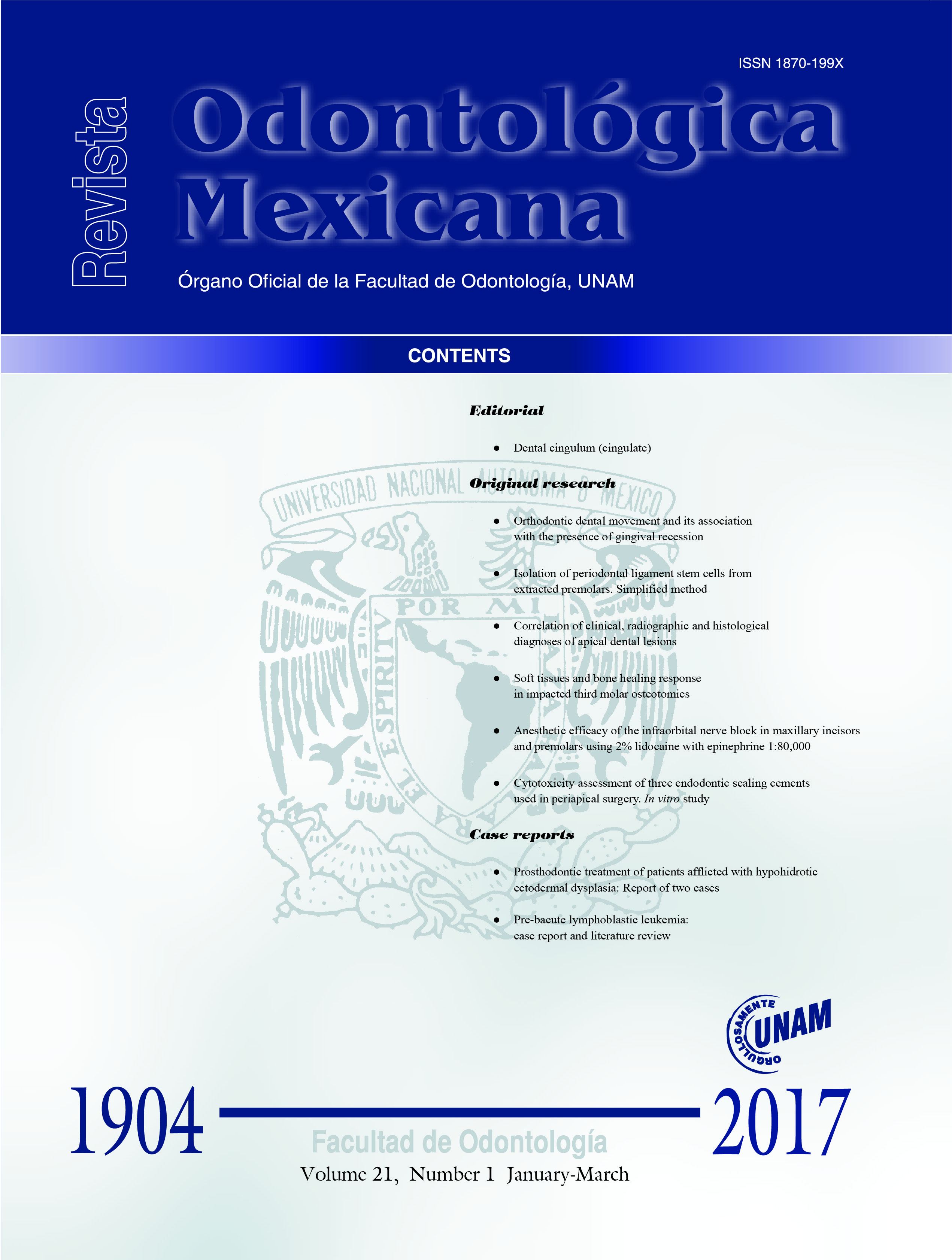Orthodontic dental movement and its association with the presence of gingival recession
Contenido principal del artículo
Resumen
The objective of the present study was to determine association between orthodontic movement type and gingival recession after orthodontic treatment. Material and methods: A series of clinical cases of 15 young patients. Circumstances of the protective periodontium of anterior upper and lower teeth were assessed before and after orthodontic treatment. Gingival recession type was assessed with Miller’s classification, orthodontic movement type was classified into: vestibular inclination, protrusion, retrusion, intrusion, extrusion and combined movements. Results: Out of 180 teeth examined, 22.2% exhibited Miller class I gingival recession; 27.5% of all gingival recessions were associated to vestibular inclination movements. No association was found between type of orthodontic movement and presence of gingival recession (p > 0.05). Conclusion: The amount of postoperative gingival recessions observed after orthodontic treatment was negligible and did not show association with orthodontic movement type.
Detalles del artículo

Revista Odontológica Mexicana por Universidad Nacional Autónoma de México se distribuye bajo una Licencia Creative Commons Atribución-NoComercial-SinDerivar 4.0 Internacional.
Basada en una obra en http://revistas.unam.mx/index.php/rom.
